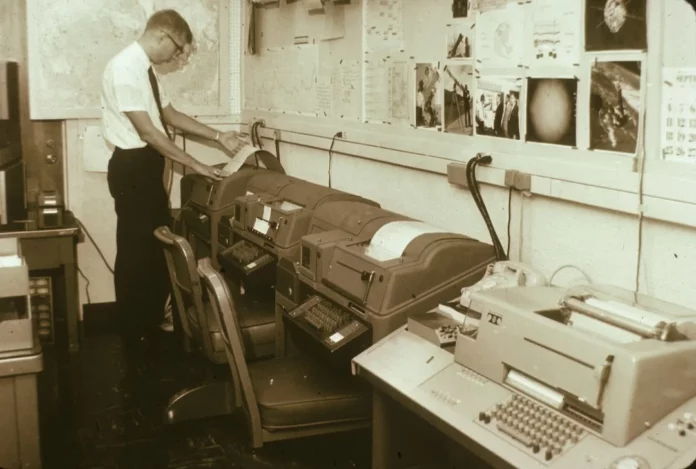Transcribed Weather Broadcasts, also known as TWBs, are an essential part of aviation communication and planning. These broadcasts provide pilots and aviation professionals with vital weather information that helps them make informed decisions regarding flight operations. TWBs are transcriptions of weather reports recorded by meteorologists at various aviation weather stations. They deliver detailed weather observations, forecasts, and other crucial information necessary for safe and efficient flight operations.
Contents
Transcribed Weather Broadcasts in Aviation
Transcribed Weather Broadcasts play a pivotal role in ensuring flight safety and efficiency. These broadcasts are primarily disseminated through various communication channels, including radio, telephone, and the internet. Pilots and aviation professionals rely on TWBs to assess the current weather conditions, forecast changes, and plan their flights accordingly. The information provided in these broadcasts helps them determine the most suitable flight routes, altitude levels, and departure and arrival times.
Transcribed Weather Broadcasts cover a wide range of weather phenomena, including cloud cover, visibility, temperature, wind speed and direction, precipitation, thunderstorms, and more. These broadcasts are updated regularly and are made available to aviation professionals at designated times. The accuracy and timeliness of TWBs are crucial, as they allow pilots to assess the weather conditions throughout their flight and make necessary adjustments to ensure the safety and efficiency of their operations.
It is important to note that TWBs are not limited to only providing current weather information. They also include weather forecasts for the near future, typically covering a span of several hours. This forecasting enables pilots to anticipate potential weather-related challenges and plan their flights accordingly, avoiding adverse conditions whenever possible.
The Importance of Transcribed Weather Broadcasts
Transcribed Weather Broadcasts are crucial for aviation safety and operational efficiency. By providing accurate and up-to-date weather information, TWBs help pilots and aviation professionals make informed decisions throughout the entire flight process. Here are some key reasons why TWBs are so essential:
1. Safety
The safety of flights is paramount in aviation, and understanding the weather conditions is vital to ensuring safe operations. TWBs provide pilots with comprehensive weather reports, including visibility, cloud cover, turbulence, icing conditions, and more. This information allows pilots to assess the potential risks associated with the weather and make informed decisions to avoid hazardous conditions.
For example, if a TWB indicates the presence of severe thunderstorms along a planned flight route, pilots can choose an alternative route or delay the flight until the weather improves. This proactive decision-making helps reduce the risk of accidents or incidents caused by adverse weather conditions.
2. Operational Efficiency
Transcribed Weather Broadcasts also contribute to the operational efficiency of aviation. By providing detailed weather information, TWBs enable pilots to optimize their flight plans and operations. These broadcasts help pilots determine the most favorable altitude levels with respect to wind conditions, select the most suitable routes to minimize fuel consumption, and strategically plan departure and arrival times to avoid adverse weather.
Additionally, TWBs facilitate accurate flight planning and scheduling. Airlines and flight operators can access TWBs to anticipate weather-related delays, plan for alternative routes, and manage resource allocation more efficiently. This proactive approach results in smoother operations, reduced costs, and improved customer satisfaction.
3. Regulatory Compliance
Aviation regulations prioritize safety and require pilots and aviation professionals to consider weather conditions when planning and executing flights. Transcribed Weather Broadcasts provide the necessary information to comply with these regulations. Pilots must be aware of, assess, and document weather conditions throughout the flight process.
Furthermore, aviation authorities and regulatory bodies rely on TWBs to monitor and enforce compliance with weather-related regulations. Access to these broadcasts enables authorities to verify that pilots and flight operators are adhering to the required safety protocols and making informed decisions based on accurate weather information.
Conclusion
Transcribed Weather Broadcasts are an indispensable resource for the aviation industry. They provide essential weather information to pilots and aviation professionals, helping them ensure flight safety and operational efficiency. The accuracy and timeliness of TWBs enable pilots to make informed decisions based on real-time weather conditions and reliable forecasts.
By utilizing Transcribed Weather Broadcasts, aviation professionals can optimize flight operations, mitigate risks associated with adverse weather conditions, and comply with regulatory requirements. TWBs play a crucial role in enhancing overall flight safety and operational effectiveness within the aviation industry.




